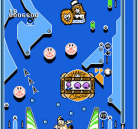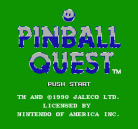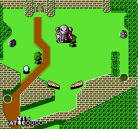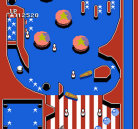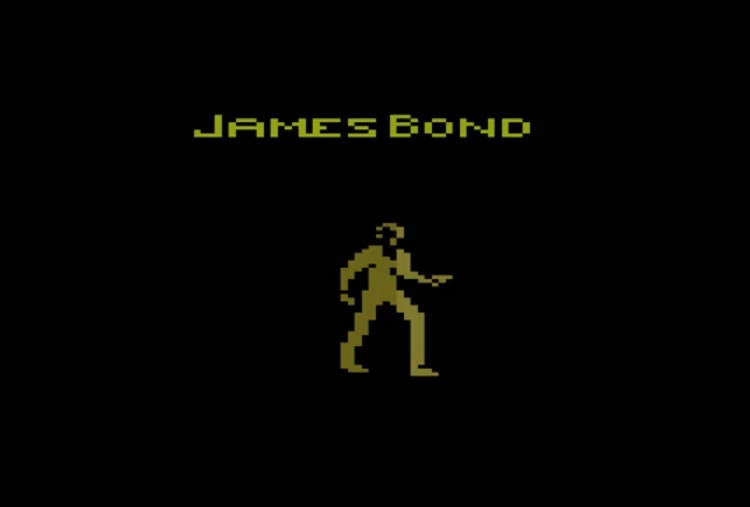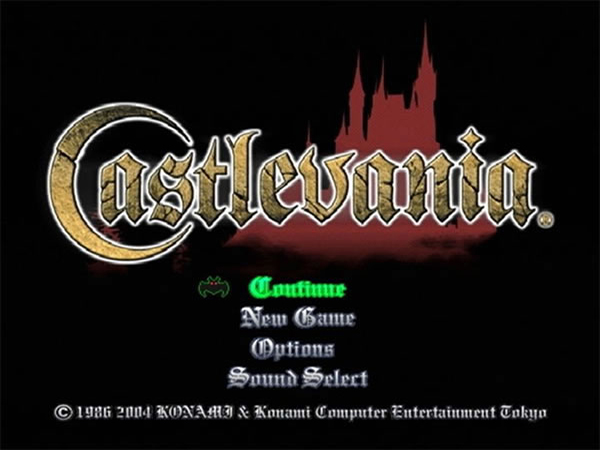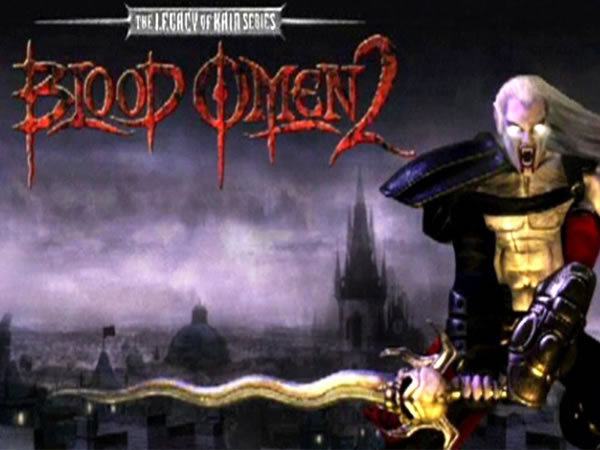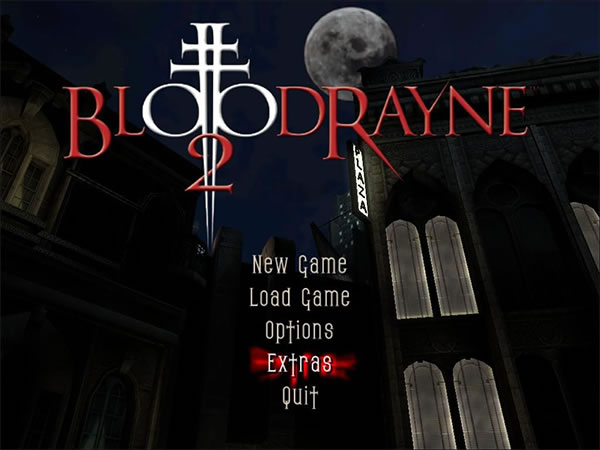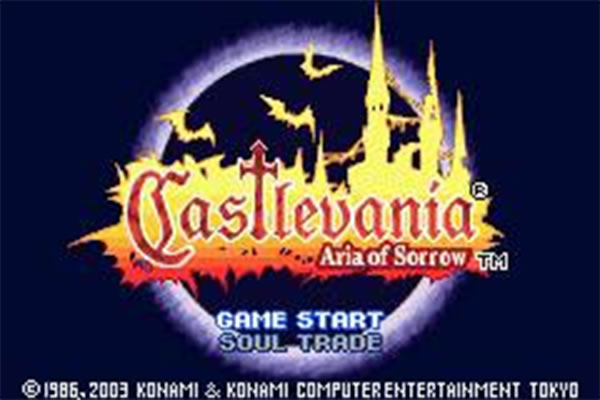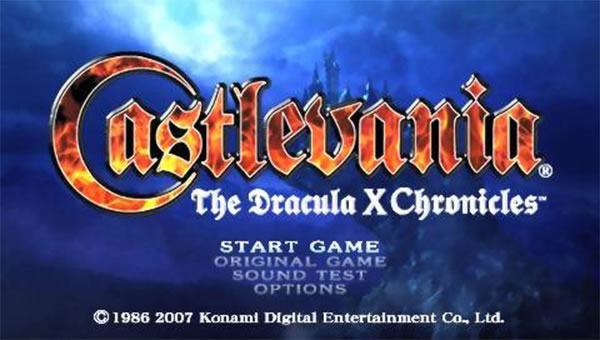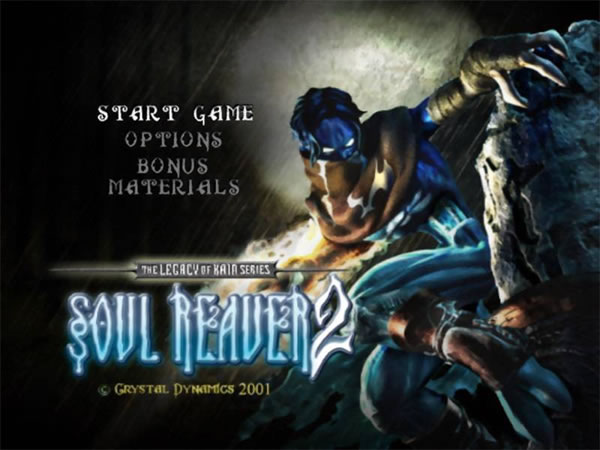- CLASSIC MAGAZINES
- REVIEW CREW
A show recapping what critics thought back
when classic games first came out! - NEXT GENERATION'S BEST & WORST
From the worst 1-star reviews to the best
5-stars can offer, this is Next Generation! - NINTENDO POWER (ARCHIVE)
Experience a variety of shows looking at the
often baffling history of Nintendo Power! - MAGAZINE RETROSPECTIVE
We're looking at the absolutely true history of
some of the most iconic game magazines ever! - SUPER PLAY'S TOP 600
The longest and most ambitious Super NES
countdown on the internet! - THEY SAID WHAT?
Debunking predictions and gossip found
in classic video game magazines! - NEXT GENERATION UNCOVERED
Cyril is back in this spin-off series, featuring the
cover critic review the art of Next Generation! - HARDCORE GAMER MAGAZING (PDF ISSUES)
Download all 36 issues of Hardcore Gamer
Magazine and relive the fun in PDF form!
- REVIEW CREW
- ELECTRONIC GAMING MONTHLY
- ELECTRONIC GAMING MONTHLY RANKS
From Mario to Sonic to Street Fighter, EGM
ranks classic game franchises and consoles! - ELECTRONIC GAMING MONTHLY BEST & WORST
Counting down EGM’s best and worst reviews
going year by year, from 1989 – 2009! - ELECTRONIC GAMING BEST & WORST AWARDS
11-part video series chronicling the ups and
downs of EGM’s Best & Worst Awards!
- ELECTRONIC GAMING MONTHLY RANKS
- GAME HISTORY
- GAME OVER: STORY BREAKDOWNS
Long-running series breaking down game
stories and analyzing their endings! - A BRIEF HISTORY OF GAMING w/ [NAME HERE]
Real history presented in a fun and pithy
format from a variety of game historians! - THE BLACK SHEEP
A series looking back at the black sheep
entries in popular game franchises! - INSTANT EXPERT
Everything you could possibly want to know
about a wide variety of gaming topics! - FREEZE FRAME
When something familiar happens in the games
industry, we're there to take a picture! - I'VE GOT YOUR NUMBER
Learn real video game history through a series
of number-themed episodes, starting at zero! - GREAT MOMENTS IN BAD ACTING
A joyous celebration of some of gaming's
absolute worst voice acting!
- GAME OVER: STORY BREAKDOWNS
- POPULAR SHOWS
- DG NEWS w/ LORNE RISELEY
Newsman Lorne Riseley hosts a regular
series looking at the hottest gaming news! - REVIEW REWIND
Cyril replays a game he reviewed 10+ years
ago to see if he got it right or wrong! - ON-RUNNING FEUDS
Defunct Games' longest-running show, with
editorials, observations and other fun oddities! - DEFUNCT GAMES QUIZ (ARCHIVE)
From online quizzes to game shows, we're
putting your video game knowledge to the test!- QUIZ: ONLINE PASS
Take a weekly quiz to see how well you know
the news and current gaming events! - QUIZ: KNOW THE GAME
One-on-one quiz show where contestants
find out if they actually know classic games! - QUIZ: THE LEADERBOARD
Can you guess the game based on the classic
review? Find out with The Leaderboard!
- QUIZ: ONLINE PASS
- DEFUNCT GAMES VS.
Cyril and the Defunct Games staff isn't afraid
to choose their favorite games and more! - CYRIL READS WORLDS OF POWER
Defunct Games recreates classic game
novelizations through the audio book format!
- DG NEWS w/ LORNE RISELEY
- COMEDY
- GAME EXPECTANCY
How long will your favorite hero live? We crunch
the numbers in this series about dying! - VIDEO GAME ADVICE
Famous game characters answer real personal
advice questions with a humorous slant! - FAKE GAMES: GUERILLA SCRAPBOOK
A long-running series about fake games and
the people who love them (covers included)! - WORST GAME EVER
A contest that attempts to create the worst
video game ever made, complete with covers! - LEVEL 1 STORIES
Literature based on the first stages of some
of your favorite classic video games! - THE COVER CRITIC
One of Defunct Games' earliest shows, Cover
Critic digs up some of the worst box art ever! - COMMERCIAL BREAK
Take a trip through some of the best and
worst video game advertisements of all time! - COMIC BOOK MODS
You've never seen comics like this before.
A curious mix of rewritten video game comics!
- GAME EXPECTANCY
- SERIES ARCHIVE
- NINTENDO SWITCH ONLINE ARCHIVE
A regularly-updated list of every Nintendo
Switch Online release, plus links to review! - PLAYSTATION PLUS CLASSIC ARCHIVE
A comprehensive list of every PlayStation
Plus classic release, including links! - RETRO-BIT PUBLISHING ARCHIVE
A regularly-updated list of every Retro-Bit
game released! - REVIEW MARATHONS w/ ADAM WALLACE
Join critic Adam Wallace as he takes us on a
classic review marathon with different themes!- DEFUNCT GAMES GOLF CLUB
Adam Wallace takes to the links to slice his way
through 72 classic golf game reviews! - 007 IN PIXELS
Adam Wallace takes on the world's greatest spy
as he reviews 15 weeks of James Bond games! - A SALUTE TO VAMPIRES
Adam Wallace is sinking his teeth into a series
covering Castlevania, BloodRayne and more! - CAPCOM'S CURSE
Adam Wallace is celebrating 13 days of Halloween
with a line-up of Capcom's scariest games! - THE FALL OF SUPERMAN
Adam Wallace is a man of steel for playing
some of the absolute worst Superman games! - THE 31 GAMES OF HALLOWEEN
Adam Wallace spends every day of October afraid
as he reviews some of the scariest games ever! - 12 WEEKS OF STAR TREK
Adam Wallace boldly goes where no critic has
gone before in this Star Trek marathon!
- DEFUNCT GAMES GOLF CLUB
- DAYS OF CHRISTMAS (ARCHIVE)
Annual holiday series with themed-episodes
that date all the way back to 2001!- 2015: 30 Ridiculous Retro Rumors
- 2014: 29 Magazines of Christmas
- 2013: 29 Questionable Power-Ups of Christmas
- 2012: 34 Theme Songs of Christmas
- 2011: 32 Game Endings of Christmas
- 2010: 31 Bonus Levels of Christmas
- 2009: 30 Genres of Christmas
- 2008: 29 Controls of Christmas
- 2007: 34 Cliches of Christmas
- 2006: 33 Consoles of Christmas
- 2005: 32 Articles of Christmas
- 2004: 31 Websites of Christmas
- 2003: 29 Issues of Christmas
- 2002: 28 Years of Christmas
- 2001: 33 Days of Christmas
- NINTENDO SWITCH ONLINE ARCHIVE
- REVIEW ARCHIVE
- FULL ARCHIVE
Pinball Quest
Pinball Quest is the kind of baffling experiment that almost works. You can tell there's a spark of brilliance in there somewhere, even if it's hidden under layers of poor decisions and bad execution. It tries hard to reinvent the 8-bit pinball genre, but ends up
 getting bogged down by its own grandiose aspirations. Pinball Quest is a game I would recommend, but only because of how unusual the whole experience is.
getting bogged down by its own grandiose aspirations. Pinball Quest is a game I would recommend, but only because of how unusual the whole experience is.
Like so many other pinball games of that time, Pinball Quest is actually a compilation of four very different tables. The first three -- Pop! Pop!, Viva! Golf and Circus -- are the opening act, presenting the kind of straight forward pinball action you're used to. Each of these tables is two screens tall and full of obstacles appropriate for the theme. For example, the 1950s diner has you knocking down bowling pins and the golf stage has both a sand and water trap.

All this is nothing more than a lead-up to the main course, a bizarre role-playing game featuring the fundamentals of pinball. The princess has been kidnapped and (surprise!) you've been called up to save her. To do this you will need to bounce the ball around trees, through graveyards, past skeletons, through spooky caves and straight through the doors of the castle. In other words, it has everything you would expect from an old school Final Fantasy game.
Although the idea may sound goofy, it actually presents a fresh take on the genre. This weird idea ends up being really endearing, especially when it comes to battling bosses and grinding for items and money. Even though it never fully comes together, you can see where TOSE (the same company that ported Chrono Trigger to the Nintendo DS) was going with the idea. It reminds me of Epic Quest, the role-playing game-inspired table for Pinball FX2.

While the concept is strong, there are a few questionable gameplay decisions that sink this ambitious pinball game. Instead of offering flippers on every screen, the player is responsible for moving them from one section to the next. You do this by pushing up and down, quickly moving the flippers into place. This ends up being a problem because the left flipper trigger is mapped to the D-pad. It's too easy to accidentally push up/down instead of left/right, which is the kind of mistake that will cost you a life.
The game also has problems with check points, especially when it comes to boss battles. You'll work so hard to finally make it into the castle to battle the boss, only to lose and have to start the whole process over again. This is made considerably worse with the funky physics and board glitches. The ball doesn't even pretend to move realistically, often with humorous results. The unrealistic physics may be explainable in the quest mode, but it's unacceptable when trying to play one of the standard tables.
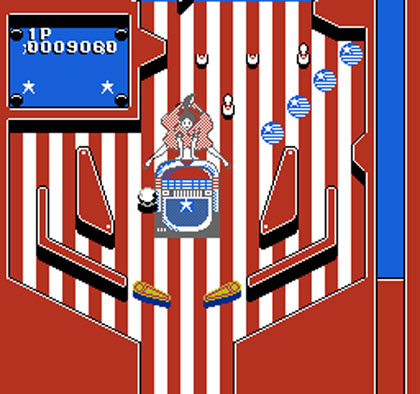
The graphics are also mediocre, offering solid colors and very little detail. You can tell that most of the effort went towards the quest mode, which features cinemas and tons of unique characters and backgrounds. I appreciate the variety and effort, but the other three games just bring the package down.
Pinball Quest doesn't quite work; it's full of design issues and physics problems. But even at its worse, there's something endearing about Pinball Quest. This is a game that really tries to be unique, and on that level it succeeds. The three dull tables are made more fun with four-player support and the quest mode will have you going until you find that princess. It's not a bad game, but know what you're getting yourself into before spending a lot of money on Pinball Quest.

Like so many other pinball games of that time, Pinball Quest is actually a compilation of four very different tables. The first three -- Pop! Pop!, Viva! Golf and Circus -- are the opening act, presenting the kind of straight forward pinball action you're used to. Each of these tables is two screens tall and full of obstacles appropriate for the theme. For example, the 1950s diner has you knocking down bowling pins and the golf stage has both a sand and water trap.

All this is nothing more than a lead-up to the main course, a bizarre role-playing game featuring the fundamentals of pinball. The princess has been kidnapped and (surprise!) you've been called up to save her. To do this you will need to bounce the ball around trees, through graveyards, past skeletons, through spooky caves and straight through the doors of the castle. In other words, it has everything you would expect from an old school Final Fantasy game.
Although the idea may sound goofy, it actually presents a fresh take on the genre. This weird idea ends up being really endearing, especially when it comes to battling bosses and grinding for items and money. Even though it never fully comes together, you can see where TOSE (the same company that ported Chrono Trigger to the Nintendo DS) was going with the idea. It reminds me of Epic Quest, the role-playing game-inspired table for Pinball FX2.

While the concept is strong, there are a few questionable gameplay decisions that sink this ambitious pinball game. Instead of offering flippers on every screen, the player is responsible for moving them from one section to the next. You do this by pushing up and down, quickly moving the flippers into place. This ends up being a problem because the left flipper trigger is mapped to the D-pad. It's too easy to accidentally push up/down instead of left/right, which is the kind of mistake that will cost you a life.
The game also has problems with check points, especially when it comes to boss battles. You'll work so hard to finally make it into the castle to battle the boss, only to lose and have to start the whole process over again. This is made considerably worse with the funky physics and board glitches. The ball doesn't even pretend to move realistically, often with humorous results. The unrealistic physics may be explainable in the quest mode, but it's unacceptable when trying to play one of the standard tables.

The graphics are also mediocre, offering solid colors and very little detail. You can tell that most of the effort went towards the quest mode, which features cinemas and tons of unique characters and backgrounds. I appreciate the variety and effort, but the other three games just bring the package down.
Pinball Quest doesn't quite work; it's full of design issues and physics problems. But even at its worse, there's something endearing about Pinball Quest. This is a game that really tries to be unique, and on that level it succeeds. The three dull tables are made more fun with four-player support and the quest mode will have you going until you find that princess. It's not a bad game, but know what you're getting yourself into before spending a lot of money on Pinball Quest.
HOME |
CONTACT |
NOW HIRING |
WHAT IS DEFUNCT GAMES? |
NINTENDO SWITCH ONLINE |
RETRO-BIT PUBLISHING
Retro-Bit |
Switch Planet |
The Halcyon Show |
Same Name, Different Game |
Dragnix |
Press the Buttons
Game Zone Online | Hardcore Gamer | The Dreamcast Junkyard | Video Game Blogger
Dr Strife | Games For Lunch | Mondo Cool Cast | Boxed Pixels | Sega CD Universe | Gaming Trend
Game Zone Online | Hardcore Gamer | The Dreamcast Junkyard | Video Game Blogger
Dr Strife | Games For Lunch | Mondo Cool Cast | Boxed Pixels | Sega CD Universe | Gaming Trend
Copyright © 2001-2025 Defunct Games
All rights reserved. All trademarks are properties of their respective owners.
All rights reserved. All trademarks are properties of their respective owners.






